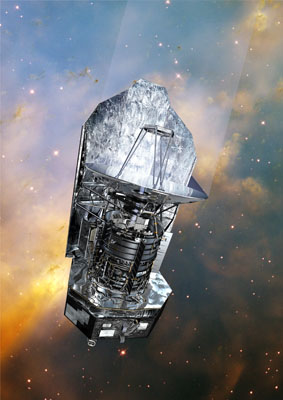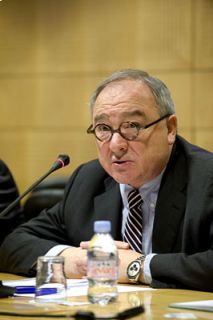This year, Europe will launch two important space telescopes and three satellites that will collect important data about the ice, gravity and the ground of the Earth

European Space Agency (ESA) Director Jean-Jacques Dordin recently set his priorities for 2009 at a conference held in Paris. According to him, the successes of 2008, including the connection of the Columbus Space Laboratory to the International Space Station, were beyond expectations. "Last year we had an outstanding harvest," he added, "but we will continue at the same pace."
European Space Agency activities this year will include the recruitment of new astronauts and the start of Soyuz launches from the European Spaceport in Kourou in French Guiana. The Soyuz initiative required a large investment in Koro to establish facilities similar to those in Soyuz's natural home - Baikonur in Kazakhstan. According to Durdin, the agency will be required to use the Soyuz for at least half of the agency's missions, both science missions and Galileo-series navigation satellite launches.
And if we talk about the Galileo program - this program is behind schedule, and this year Dordin expects positive progress, when the first contract to build the systems will be awarded in the coming months.
The European Space Agency is building and preparing for launch its second Autonomous Cargo Vehicle (ATV) to the International Space Station after Jules Verne which was launched this year. The cargo ship, which operated smoothly in its first version, will become the main way of providing supplies to the space station after the American space shuttles are taken out of service.
Meanwhile, the agency has been promised an infusion of 10 billion euros in the next 3-5 years. The relevant European ministers from each country will each add investment in the high-tech industries dealing with space in their country to help Europe somewhat curb the economic slowdown.

Among the expected scientific tasks in 2009:
- Herschel - a space telescope that will be launched in the spring on top of an Ariane 5 rocket. The telescope is designed to observe the universe in the far infrared range. This will allow him, for example, to see through the dust that hides the first stages of the creation of the stars and planets.
- Planck - this telescope will ride into space together with Herschel on the same Ariane launch. He will study the cosmic background radiation in the microwave field. It is sometimes referred to as the "first light" of the universe. The cosmic background radiation carries information about the first structures in the universe.
- Soyuz - the Russian rocket will begin to be launched from the European spaceport in Koro. Since the rockets are launched close to the equator this gives them a boost from the Earth's rotation. Soyuz in Koro will be able to launch heavier satellites. In 2010, commercial launches of Galileo satellites using Soyuz and Ariane will begin.
- Vega - this is the newest European rocket. It is currently scheduled to make its maiden flight from its origin in December 2009. Vega will be used to deliver small payloads that have not recently found an available launcher. Vega is part of the European Space Agency's policy for guaranteed access to space.
- Astronaut Franck de Vigny - the Belgian astronaut will become the first European commander of the International Space Station. It will be launched from Kazakhstan on a Soyuz spacecraft in May. His position will last about six months and for the first time he will also have a team of five people under his responsibility.
- Gus – The wedge-shaped satellite will be the first of its kind by the European Space Agency to be used for Earth exploration. The spacecraft will map the subtle differences in gravity on Earth's surface. The data will reveal new details about the behavior of the oceans, thereby inaugurating a universal system of remote sensing.
- Smos - the mission to measure soil moisture and ocean salinity was designed to observe soil moisture over the continents and salinity in the oceans. This will improve our understanding of the water cycle and the pattern of flows in the oceans.
- Cryosat-2 – The first cryosat mission was destroyed at launch. The members of the countries that make up the agency agreed that the mission was important enough to be rebuilt. The spacecraft will measure the rate of changes in the sea and land ice cover with great precision.

3 תגובות
A telescope to view things we will never reach and satellites to explore the earth..
But things that will not contribute to the real and important challenge that is - settlement outside of Israel.
What about a mission to Mars?
The Europeans put gas...